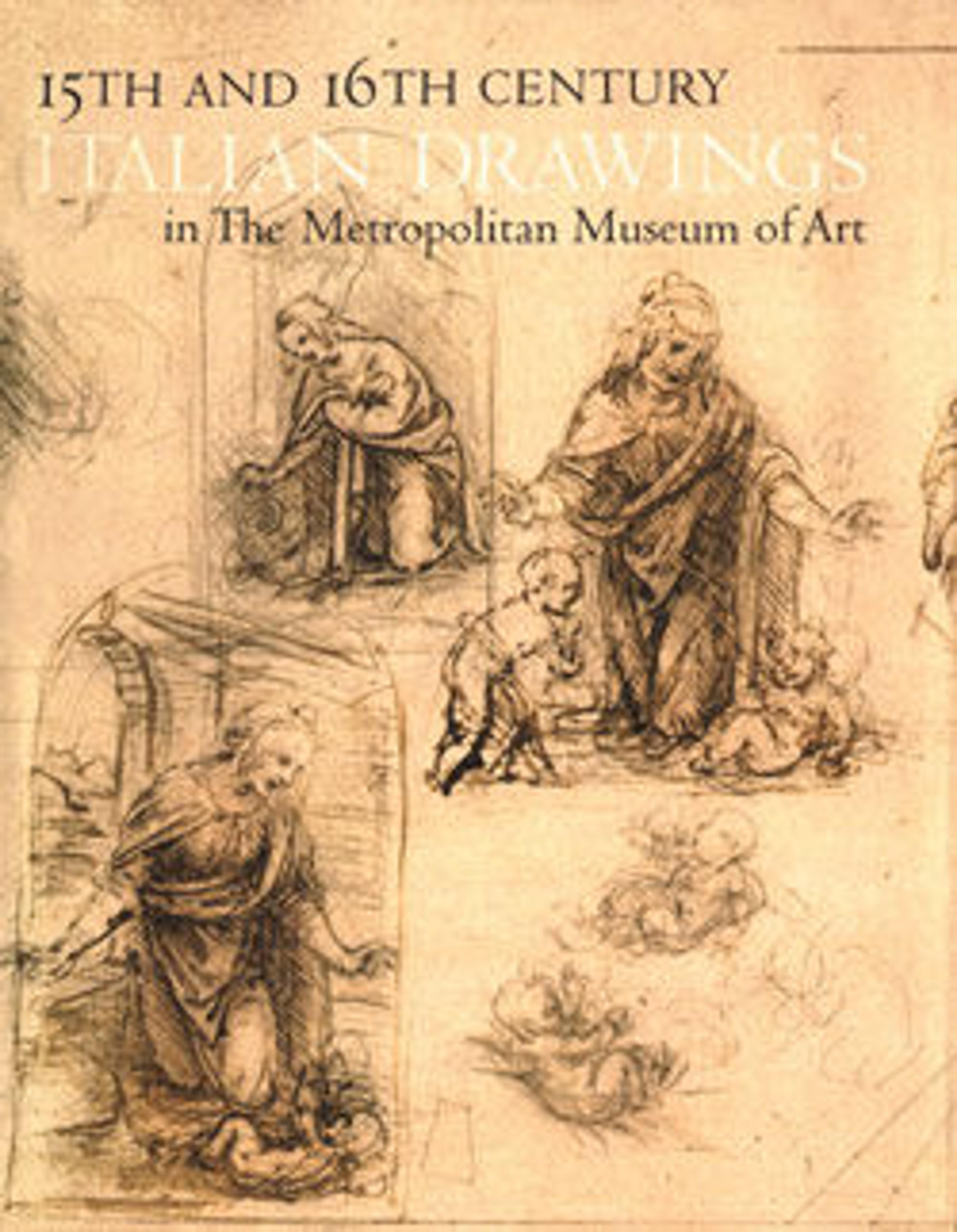Allegory of the Redemption of the World
This ‘chiaroscuro’ drawing with the ‘Allegory of the Redemption of the World’ is one of the largest known by Paolo Veronese and was conceived as an independent work of art, not as a preparatory study for a painting. Sibyls grouped around the empty tomb of Christ and prophets situated in the clouds above act as intermediaries between the earthly and heavenly realms. The scrolls they hold refer to prophesies for the redemption of the world, the idea embodied above. There, one sees the Holy Trinity with Christ blessing a kneeling figure—either Adam or Saint John—who is presented by Mary. Veronese, one of the great masters of pictorial representation "di sotto in su," (from below) imbued the heavenly realm with a lofty character suited to the exalted theme.
Jonathan Richardson, the noted seventeenth-century English collector of Old Master drawings, owned this work and inscribed a lengthy explanation of the obscure subject on its verso (see here "Signatures, Inscriptions and Markings" while for a further reading of Richardson’s inscription see Whistler 2014). The text that Richardson has transcribed gives an elaborate explanation of the allegorical intentions of the artist, and it is particularly interesting concerning the presence of the sibyls at the bottom of the composition; holding prophetic scrolls, they are gathered around an empty tomb and are oblivious to the great revelation above them. Irwin Panofsky points out, however, that the description may err in describing the figure kneeling in intercession besides the standing Virgin as the "First Author of Original Sin," namely Adam. In placement and appearance this figure would seem to be John the Baptist, who often accompanies the Virgin as joint intercessor for mankind at the Last Judgment.
Jonathan Richardson, the noted seventeenth-century English collector of Old Master drawings, owned this work and inscribed a lengthy explanation of the obscure subject on its verso (see here "Signatures, Inscriptions and Markings" while for a further reading of Richardson’s inscription see Whistler 2014). The text that Richardson has transcribed gives an elaborate explanation of the allegorical intentions of the artist, and it is particularly interesting concerning the presence of the sibyls at the bottom of the composition; holding prophetic scrolls, they are gathered around an empty tomb and are oblivious to the great revelation above them. Irwin Panofsky points out, however, that the description may err in describing the figure kneeling in intercession besides the standing Virgin as the "First Author of Original Sin," namely Adam. In placement and appearance this figure would seem to be John the Baptist, who often accompanies the Virgin as joint intercessor for mankind at the Last Judgment.
Artwork Details
- Title:Allegory of the Redemption of the World
- Artist:Paolo Veronese (Paolo Caliari) (Italian, Verona 1528–1588 Venice)
- Date:1528–88
- Medium:Pen and black ink, brush and gray wash, highlighted with white gouache, on gray washed paper
- Dimensions:24 1/8 x 16 9/16in. (61.3 x 42cm)
- Classification:Drawings
- Credit Line:Rogers Fund, 1961
- Object Number:61.203
- Curatorial Department: Drawings and Prints
More Artwork
Research Resources
The Met provides unparalleled resources for research and welcomes an international community of students and scholars. The Met's Open Access API is where creators and researchers can connect to the The Met collection. Open Access data and public domain images are available for unrestricted commercial and noncommercial use without permission or fee.
To request images under copyright and other restrictions, please use this Image Request form.
Feedback
We continue to research and examine historical and cultural context for objects in The Met collection. If you have comments or questions about this object record, please contact us using the form below. The Museum looks forward to receiving your comments.
